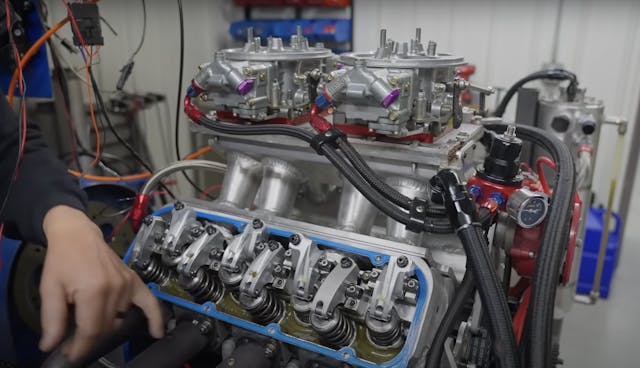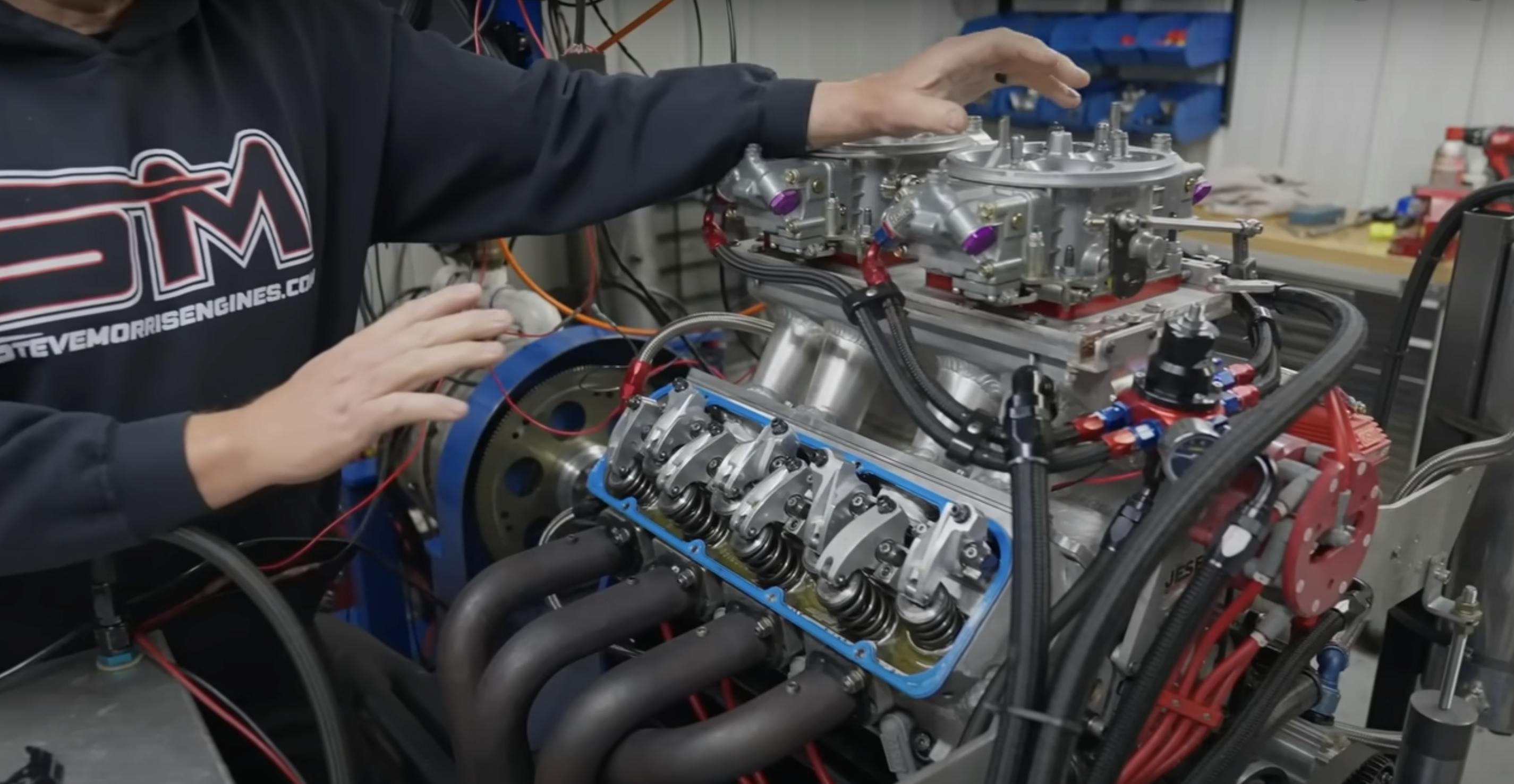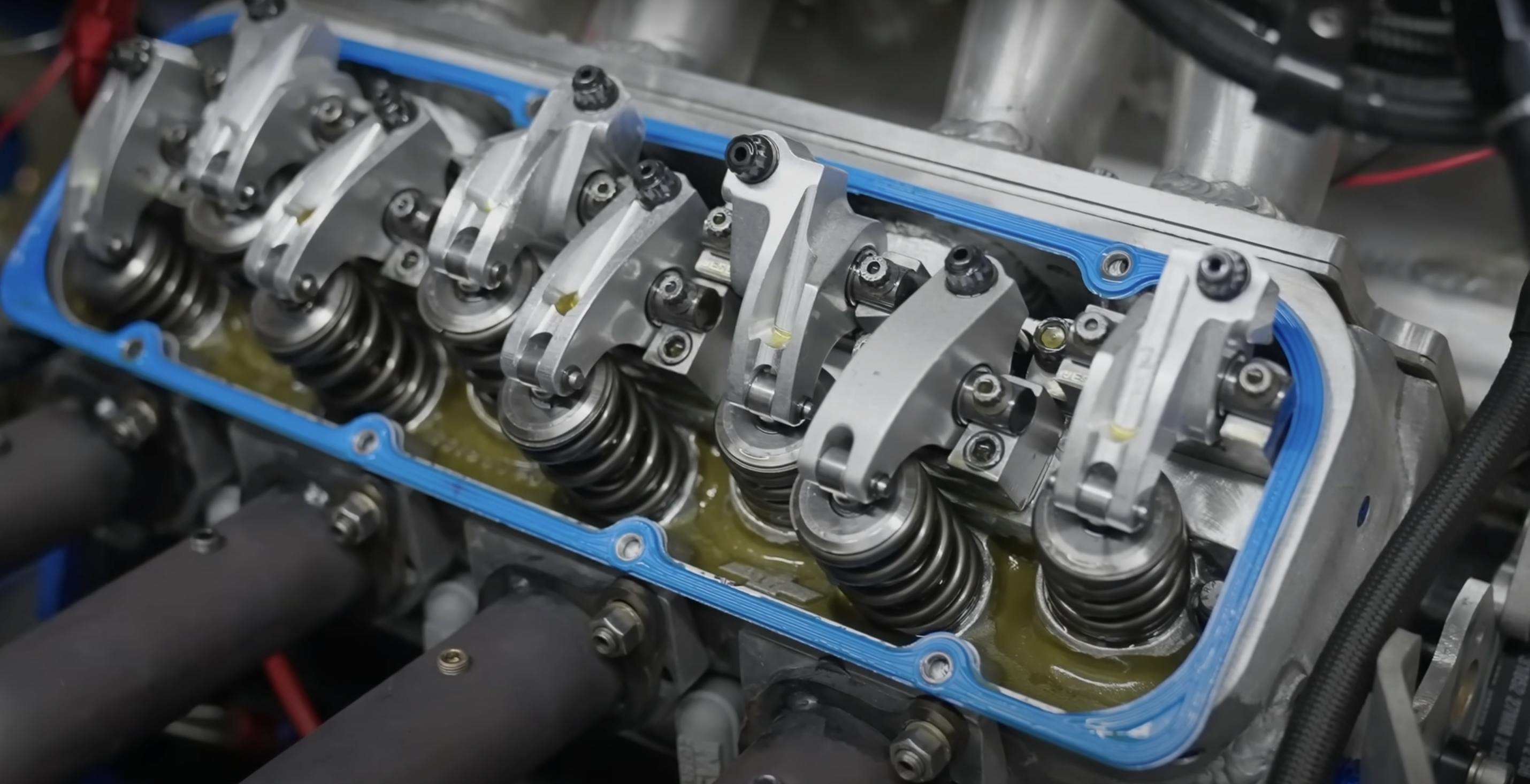Can You Diagnose this Struggling Pro-Stock Chevy Small-Block?
Whodunits are fun. About a quarter of the top-ranking global podcasts are true-crime-themed. Working to understand every twist and turn to solve the mystery gives people a rush. That’s the feeling gearheads chase when something isn’t working and they want to track down the cause. The engines under our hoods are comprised of myriad parts and systems that, when all operating as designed, create a harmonious symphony of power, heat, and exhaust. When something is wrong, it can be a frustrating experience learning just how much more intricate an engine can be than simple “does it have fuel, air, and spark?”
The latest diagnostics tale I’ve been following is that of high-performance engine builder Steve Morris and the small-block Chevrolet V-8 that got bolted up to his dynamometer. The engine is in its second life now; it first served as an NHRA Pro Stock Truck powerplant when the NHRA had such a class nearly 30 years ago. It wears heavily modified Chevrolet casting, which is unique compared with many high-horsepower applications these days that utilize aftermarket and improved castings or, simply, blank-slate billet engine blocks and cylinder heads.
That NHRA class, full of Chevrolet S10- and Ford Ranger-bodied vehicles, is long faded from it’s short-lived popularity. But that didn’t mean this engine was relegated to a shelf or scrap metal pile. Instead, it now lives inside a mini-mod pulling tractor that is designed to move a weighted sled as far and as fast as possible on dirt. It’s a very different use case for the engine, and that created problems. As we learn in Morris’ YouTube video, the first issue was recently solved, but another popped up and it’s a stumper. On the bright side, it’s an interesting reason to learn something.
The initial problem: The engine would destroy the thrust bearing on the crankshaft after only a few runs down the dirt track. Turns out, the amount of clutch usage and pressure plate force over the duration of a tractor pull run is significantly different compared with the rapid-fire hits of shifting down a drag strip. The solution was a roller-style thrust bearing, and to be sure the fix was going to work, Morris hung the engine on the dyno to give it final checks.
After the first loaded pull, the engine exhibited a slightly higher idle than before. After the second pull, the idle reset again to another couple hundred rpm higher. Even after the team dialed in the idle air screws and reset the idle on the carbs, the engine continued to high-idle after a dyno pull. It even coughed a bit of smoke on startup after sitting between pulls. No vacuum leaks could be found.
Later in the video, Morris seems to have some ideas as to the cause of the high idle, but he doesn’t let on much. Can we at-home players suss out the problem?
My personal theory is that the problem is related to ignition timing. The short clip of a dyno pull at the start of the video shows that this engine is using the front-mounted distributor for arcing the plugs. While it’s extremely unlikely to be running a points plate, there could be some form of mechanical advance inside that is hanging up as the engine slows down after a dyno pull. Or the pick-up and sensor are moving due to vibration thus causing a slight timing change.
I am also totally aware that my theories could be 100 percent wrong. Is the fact that Morris has the valve cover off in the video a tell or a well-placed red herring?
Morris closes the video with a promise that he will post a video within a couple of days, revealing the answer. These kinds of diagnostic discussions are just plain fun for some gearheads. If you have a solid guess, leave a comment below. I promise not to edit the story when you prove how wrong I am!
***
Check out the Hagerty Media homepage so you don’t miss a single story, or better yet, bookmark it. To get our best stories delivered right to your inbox, subscribe to our newsletters.





Troubleshooting is a very tactile experience and generally is not very successful remote
Intake gasket right rear bottom, angle wrong between intake and head.
Do you guy’s realize that the engine in the video and pictures is a big block Chevy not a small block Chevy engine. I wonder if that could make a difference when trouble shooting. But it does sound logical that a rear roller thrust bearing would help solve the problem. Now for the next problem it could be a number of reasons for the idle problem, check them off one at a time.
For these type of applications engines that develop max torque at low RPM are required.
Cracked cylinder head or intake or gasket leaking air and oil into an intake port. Obviously leak would be worse as the engine get’s hot since aluminum expands faster than cast iron. In addition, the leak is likely under the intake. This area, when the motor is running hard, has oil particles suspended in the air. At idle it might puff at first but oil is not flying around at idle, so there will be no oil sucked into the intake, just air causing the vacuum leak resulting in having to close the throttles down to get it to idle. These leaks are tough to diagnose since you can’t spray WD-40 on it and hear a change in rpm, so even Steve was challenged which is likely why he made a video.
First, that’s not really a Small Block Chevy. I believe those heads are an early version of what became the SB2 Chevy engine. Not quite an LS, but maybe a early cousin.
I agree with Dean, it’s likely a leak in the lower part of the intake gasket that’s letting oil into the intake tract. It might have suffered a backfire or possibly a damaged gasket that allowed it to suck up a some oil.
You failed to mention you never checked the timing. Most guys check the timing, after things like checking or setting the lash or every pass. I think the timing changed. The fix would be to adjust the ignition timing or to find out why the thrust bearing caused the timing to change. You left a lot of information undisclosed that would be eliminated.
I agree with James. I had a mildly modified small block back in the early 80’s in a pickup. I enjoyed shutting down the local 5.0 Mustangs and other street racers who thought my beat up truck just sounded good but couldn’t run. I had a similar problem to what you are experiencing and it nearly drove me nuts until I discovered I was jumping timing. My gears looked good but there was just enough play in my timing chain to allow it to jump a tooth or two even when under extreme pressure. I learned through the years, starting with a Model A Ford flat head four that most perceived gas issues are actually electrical.
Is it a gear drive or chain driven cam. Id start there for drifting timing
You wouldnt beat my 5.0 with a junk 350.
I’m your huckleberry
I’d guess that whatever he didn’t mention are probably not relevant and would eliminate the usual suspects like leaky gasket and whatnot. Those are too obvious.
It’s not a LS?
Looks like a Big Block to me. Not a small block.
Those are NHRA special heads, as mentioned in the text of the article, from 30 years ago.
Have you never seen Warren Johnson’s Prostock Olds heads? It’s pretty hard to find a good pic because he was pretty secretive but those heads look a lot more like BBC than they did Olds.
Dean wrote a clear version of what I thought… leak on the underside of the intake..
Sounds like a bent crankshaft.
The thrust bearing issue is not what this article is about.
Yup, I agree, something is crooked somewhere. Tolerances change from cold to hot. There is a hot surface somewhere that is changing rpm. Take it down, and check for scoring. That or mixture is not the same cold v hot.
I think Dean is right. Some sort of a vacuum leak
I can only see two cause for destroying the thrust bearing on the crankshaft.
Firstly a bad crank, or secondly a misalignment of the bearing fits.
Is it possible the block has a slight twist after many years of extreme loading.
With bushing style bearings, it wouldn’t take much to cause an increase in an axial load.
Thrust bearing issue is not what this article is about. That’s been resolved.
And I’ll go with what the others who think it’s a vacuum leak…vacuum leak underneath the intake…probably where the intake meets the head.
Roller rocker roller seized, causing side thrust on one or more intake valves, resulting in wear to a valve guide, resulting in air leak thru guide, as well as pulling in a little oil from the upper valve chamber at crank/idle, causing a puff of smoke on startup.
Had a high idle problem on my 50 Ford truck flathead. Checked timing, readjusted carburetor to no avail. Turned out to be a weak throttle return spring. Put on correct spring, problem solved.
Aside from the smoke, and no vacuum leak confirmed (smoke test) it could be partially plugged pilot jets causing a lean, high, unstable idle — especially if ethanol was involved.
Have you checked the end-play on the distributor shaft? I have seen a loose nut/gap there cause similar issues? Hard one to track down and annoying.